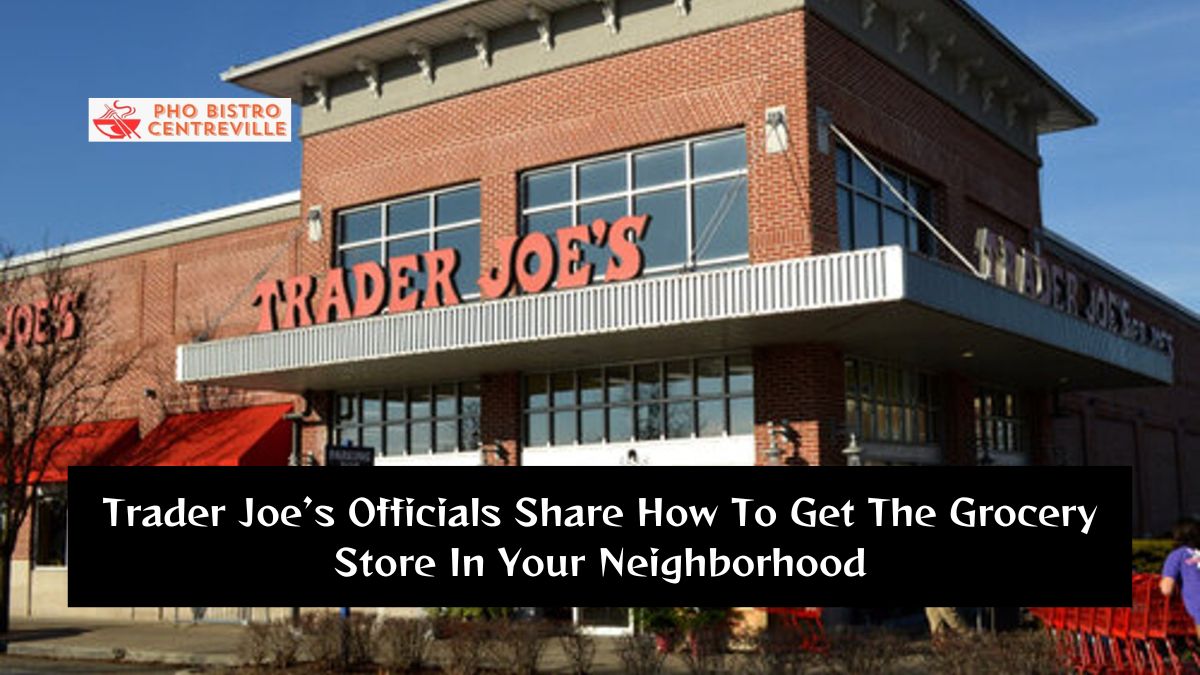Trader Joe’s has become a beloved grocery store chain, with its unique selection of affordable organic and specialty items, friendly staff, and eclectic store atmosphere.
But if you’re wondering how to get a Trader Joe’s in your neighborhood, it’s not as simple as sending a request. In a recent episode of the Inside Trader Joe’s podcast, hosts Tara Miller and Matt Sloan shared behind-the-scenes insights on how Trader Joe’s decides where to open new locations.
Here’s a breakdown of the criteria they look for, what they avoid, and how you can better understand Trader Joe’s selection process for future locations.
1. Population Density: Why Location Matters
Trader Joe’s is always looking for areas where people are readily available to visit the store. According to Sloan, dense population is a priority in deciding where new stores will be placed. “First and foremost, we’re looking where people are,” Sloan stated. “More typically is better. So, dense population.”
Consideration for Busy Areas This means that Trader Joe’s prioritizes neighborhoods where there are large numbers of potential customers.
The closer people live and work near the store, the more likely they are to become regular shoppers. If your neighborhood is densely populated, it’s more likely to fit the ideal profile Trader Joe’s seeks.
2. Proximity To Other Stores
Although Trader Joe’s values expanding into areas without nearby locations, they do not completely rule out placing stores close to others. Even if another store is relatively close by, high-density neighborhoods with complex traffic patterns might still be good candidates for new locations.
Addressing Traffic Flow Sloan explained that while two stores might be close on a map, traffic congestion may make it difficult for customers to reach one from the other.
In such situations, Trader Joe’s may consider adding a store in the area to ease accessibility. “It could be an area where there is no currently available Trader Joe’s store,” he said, “or even if there is one, traffic patterns may make it hard to reach.”
3. Importance Of Parking
Parking is another top priority in Trader Joe’s location decisions. Miller emphasized that contrary to some customers’ beliefs, Trader Joe’s does care about parking availability. “I know people think that we don’t care about parking. We do care about parking,” Miller stated.
Prioritizing Ease Of Access They prefer spots with ample parking space to accommodate the high volume of traffic a new Trader Joe’s store generates.
Whether in a standalone parking lot or within a shopping center, the availability of easy parking is crucial for ensuring a smooth shopping experience.
4. Trader Joe’s Avoids Buying Other Chains
Trader Joe’s strategy for growth is intentional and unique. Instead of expanding by purchasing existing chains, Trader Joe’s builds stores from scratch.
Sloan emphasized that they are not interested in acquiring other grocery stores and simply rebranding them. This allows Trader Joe’s to maintain control over the store experience and ensure each location meets their exact specifications.
5. Analyzing Over 1,000 Sites Across The U.S.
Trader Joe’s is actively examining more than 1,000 potential sites across 48 states to determine where new stores could best serve their customer base.
They currently operate nearly 600 stores across the U.S., but Alaska and Hawaii remain exceptions due to logistical challenges, as noted in the podcast episode.
Commitment To Data-Driven Decisions Although they are considering numerous locations, Trader Joe’s makes data-driven decisions based on population density, ease of access, and traffic flow.
Unfortunately, customer campaigns or petitions won’t influence their decision. Sloan explained that while they appreciate the enthusiasm from customers, these campaigns don’t impact their final decisions.
6. Why Customer Requests Don’t Drive Location Decisions
Many fans eager to bring Trader Joe’s to their neighborhood may start social media campaigns or letter-writing efforts, but the company doesn’t base its decision-making on these customer requests.
Miller elaborated, “We’re excited when people are excited about us, but that’s really not what’s driving the decisions about what brings a Trader Joe’s.”
7. Access And Traffic Flow As Key Deciding Factors
At the end of the day, Trader Joe’s bases its decision to open a new location on practicality, access, and ease of entry. Sloan noted that they focus on “access and ease of getting into and out of, and the flow of traffic patterns.” This means that, while a community may be enthusiastic about bringing Trader Joe’s to their neighborhood, the brand’s primary concern is logistical suitability.
Fun Facts: Why Trader Joe’s Uses Bells Instead Of Intercoms
An interesting detail shared in the podcast reveals why Trader Joe’s uses bells instead of an intercom system to communicate among employees.
The bell system is rooted in maritime tradition, with one, two, or three bells signaling specific needs within the store. Here’s how the system works:
- One Bell: Calls for a cashier.
- Two Bells: Requests someone to help find an item.
- Three Bells: Indicates a need for a manager.
This simple and cost-effective method has become a staple of the Trader Joe’s shopping experience and adds to the store’s unique charm.
Final Thoughts
While Trader Joe’s is known for its strong fan base and unique grocery options, the process of bringing a new store to your neighborhood isn’t as simple as popular demand.
With nearly 600 stores and plans to expand, the company remains focused on high-traffic, easily accessible areas with ample parking. Although customer excitement is valued, Trader Joe’s officials base location decisions on population density, ease of access, and traffic flow.
If your neighborhood checks all these boxes, there’s a good chance it might become home to the next Trader Joe’s. Until then, keep an eye out for new locations and enjoy the insight into how one of America’s favorite grocery stores decides where to expand next.

